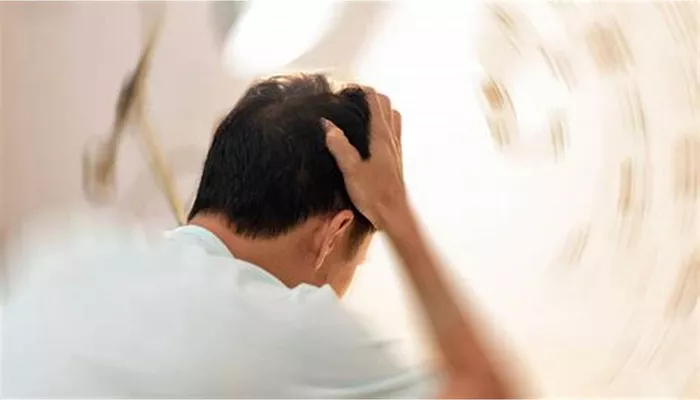Orthostatic hypotension is a common condition where blood pressure drops significantly when a person stands up from sitting or lying down. This sudden drop can cause dizziness, lightheadedness, or even fainting. Understanding why this happens requires knowledge of the body’s normal blood pressure regulation and how it can fail.
This article explains in detail why orthostatic hypotension causes dizziness. It covers the normal physiological processes, how they change in this condition, and what symptoms arise. The goal is to provide clear, fact-based information that can help patients and healthcare providers understand this problem.
Understanding Orthostatic Hypotension
What Is Orthostatic Hypotension?
Orthostatic hypotension, also called postural hypotension, is defined as a drop in systolic blood pressure of at least 20 mmHg or diastolic blood pressure of at least 10 mmHg within three minutes of standing. This condition can be temporary or chronic. It affects blood flow to the brain and other organs.
How Common Is Orthostatic Hypotension?
It is common among elderly people but can affect adults of all ages. Causes include dehydration, medications, neurological disorders, and heart problems.
Normal Blood Pressure Regulation on Standing
Gravity and Blood Flow
When a person stands up, gravity pulls blood down toward the legs and lower body. This reduces the amount of blood returning to the heart. Normally, the body quickly compensates for this change to keep blood pressure stable.
Role of the Autonomic Nervous System
The autonomic nervous system controls heart rate and blood vessel tone. When standing, sensors called baroreceptors detect the drop in blood pressure and send signals to the brain. The brain then tells the heart to beat faster and blood vessels to tighten. This raises blood pressure and maintains blood flow to the brain.
Muscle Pump Action
Leg muscles also help push blood back to the heart during standing. This is called the muscle pump. It helps maintain blood volume in the upper body.
Why Orthostatic Hypotension Causes Dizziness
Inadequate Blood Pressure Compensation
In orthostatic hypotension, the body’s normal response fails. Baroreceptors may not detect the blood pressure drop properly, or the autonomic nervous system might not react sufficiently. As a result, blood vessels stay relaxed, and the heart rate does not increase enough.
This leads to low blood pressure after standing. Blood flow to the brain decreases. Without enough oxygen and nutrients, brain cells cannot function well, causing dizziness.
Reduced Cerebral Perfusion
Cerebral perfusion means the blood flow to the brain. It depends on maintaining adequate blood pressure. When orthostatic hypotension occurs, cerebral perfusion drops. This reduced blood supply triggers symptoms such as lightheadedness, blurred vision, and sometimes fainting.
Effect of Decreased Oxygen Supply
Brain cells need constant oxygen to work properly. When blood pressure falls, oxygen delivery falls too. This lack of oxygen temporarily disrupts normal brain activity and balance control, causing dizziness.
Other Contributing Factors
Medications: Some drugs lower blood pressure or interfere with the autonomic nervous system.
Dehydration: Low blood volume worsens orthostatic hypotension by reducing venous return.
Age-related Changes: Blood vessel stiffness and slower nerve responses reduce compensation.
Neurological Disorders: Diseases like Parkinson’s can impair autonomic control.
Symptoms Associated with Orthostatic Hypotension
Dizziness and Lightheadedness
The most common symptoms are dizziness or feeling faint shortly after standing. This is caused by the brain not getting enough blood flow.
Blurred Vision and Weakness
Some patients also experience blurred vision due to reduced blood supply to the eyes and weakness from insufficient oxygen to muscles.
Syncope (Fainting)
If cerebral perfusion drops severely, fainting can occur. This is a protective mechanism to bring the body to a horizontal position and restore blood flow to the brain.
Fatigue and Confusion
Chronic or frequent orthostatic hypotension can cause persistent fatigue and confusion due to repeated low brain oxygenation.
Causes and Risk Factors for Orthostatic Hypotension
Dehydration and Blood Loss
Low blood volume from dehydration or bleeding reduces venous return and worsens blood pressure drops on standing.
Medications
Diuretics, blood pressure medicines, antidepressants, and some Parkinson’s drugs can cause or worsen orthostatic hypotension.
Neurological Diseases
Conditions like Parkinson’s disease, diabetic neuropathy, and multiple system atrophy impair autonomic nervous system responses.
Heart Problems
Heart failure, valve disease, or arrhythmias reduce the heart’s ability to compensate for blood pressure changes.
Aging
Older adults often have reduced baroreceptor sensitivity and stiffer arteries, impairing blood pressure control.
Diagnosis and Testing
Measuring Blood Pressure Changes
Doctors diagnose orthostatic hypotension by measuring blood pressure while lying down and after standing for up to three minutes.
Additional Tests
Tests like tilt table testing, blood volume measurement, and autonomic function tests help identify the cause.
Symptom Evaluation
Detailed history about dizziness, fainting episodes, medication use, and other medical conditions is important.
Treatment and Management
Lifestyle Modifications
- Rise slowly from lying or sitting to standing
- Increase water and salt intake if appropriate
- Wear compression stockings to improve venous return
- Avoid alcohol and hot environments that cause blood vessel dilation
Medication Adjustments
Review and adjust medications that lower blood pressure or affect autonomic function.
Medications for Orthostatic Hypotension
Drugs like fludrocortisone or midodrine may be prescribed to increase blood volume or constrict blood vessels.
Physical Therapy and Exercises
Strengthening leg muscles helps improve the muscle pump effect and reduce symptoms.
Preventing Complications
Dizziness from orthostatic hypotension increases fall risk. Falls can cause serious injury, especially in older adults.
Prevention includes safe standing techniques, home safety improvements, and regular monitoring.
Conclusion
Orthostatic hypotension causes dizziness due to a sudden drop in blood pressure when standing. This leads to reduced blood flow and oxygen to the brain. Failure of the body’s normal compensation system is the main reason. Understanding the mechanisms helps manage symptoms and reduce risks. Patients should work closely with healthcare providers for diagnosis and tailored treatment to improve safety and quality of life.
Related topics:


